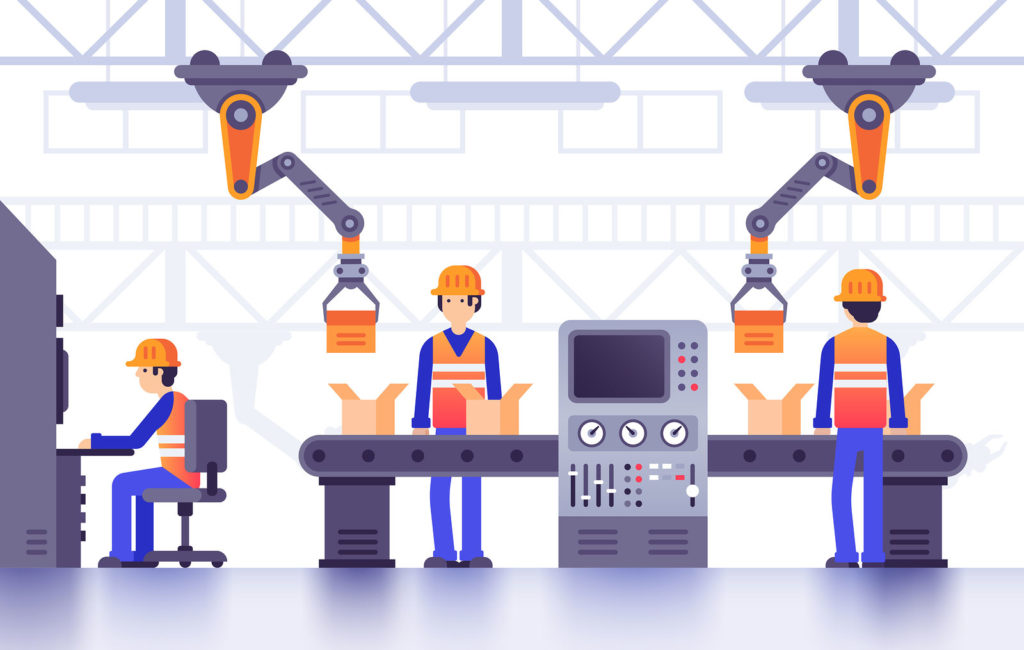Back to: BUSINESS STUDIES JSS1
Welcome to class!
In today’s class, we will be talking about production. Enjoy the class!
Production

What is production?
Production can be defined as the creation of utility or the creation of goods and services to satisfy human wants. It can also be defined as the process of combining various materials inputs and immaterial inputs to make something for consumption. It is the act of creating output, a goods and service that has value and contribute to the utility of an individual.
Economic well-being is created in a production process, meaning all economic activities that aim directly or indirectly to satisfy human want. The degree to which the needs are satisfied is often accepted as a measure of economic well-being.
In production, they are two features which explain increasing economic well-being. They are improving quality-price-ratio of commodities and increasing income from growing and more efficient market production.
One major thing about production is that it is not complete until it gets to the final consumer.
Stages and types of production
Production is classified into two types, which are:
- Direct production
- Indirect production
The direct production:
This is when an entity is capable of producing all of the materials necessary for their product production by using their own skill sets without focusing on one product or requiring staff to perform different jobs. Direct production also means the type of production in which an individual produces goods and services only for the family use or consumption, the goods and services produced are not for sale but for the family consumption.
Indirect production:
The production of an item necessary for the manufacturing of major services and goods. Indirect production is an economic term that refers to the process of producing something in an indirect manner. This may be achieved through the use of another item for the production of the final good, or it may be achieved through the production of something to be used as a means of obtaining another item.
In either case, the item that is produced is merely used as a means for the production or procurement of the final item. It is the type of production of goods and services mainly for sale or exchange for other needs. An example of indirect production can be seen in the production of an item expressly for producing other items.
Usually, the indirect product is a form of machinery or equipment that is used to produce other objects. For example, a company that makes prefabricated houses might construct patented equipment that serves as a mould for the construction of a portion of the exterior for the prefabricated homes. In this case, the machinery is merely the means that is used for the production of the final product and is consequently a form of indirect production.
Indirect production is subdivided into three major groups, which are:
- Primary production
- Secondary production
- Tertiary production
- Primary production: Primary production refers to the extraction of raw materials provided by nature. It is concerned with the process of obtaining raw materials in their natural form, from land, water, and air. Examples of primary production are agriculture, mining, lumbering, and fishing.
- Secondary Production: Secondary production involves the transformation or conversion of raw materials into finished goods, the extractive materials from the primary production are converted into goods the consumer will find consumables. Examples are clothes, processed food, cars, beverages etc.
- Tertiary Production: This is the provision of professional or commercial services to people; it is how the foods produced at the primary and secondary level are distributed to the people for consumption. Those involved in this aspect of production are the retailers, wholesalers, and those involve in rendering professional services like lawyers, doctors etc.
Importance of production
The following are the importance of production:
- Increasing the quality and specification of the product.
- Providing superior levels of service in providing the product.
- Enhancing the image of the product through marketing.
- Availability of goods and services.
- Improvement in the standard of living
- Increase in the wealth of people.
- Provision of employment.
- It helps in the acquisition of skills.
- It helps in the development of a country.
- Provide an increase in export potential
We hope you enjoyed the class.
Should you have any further question, feel free to ask in the comment section below and trust us to respond as soon as possible.
